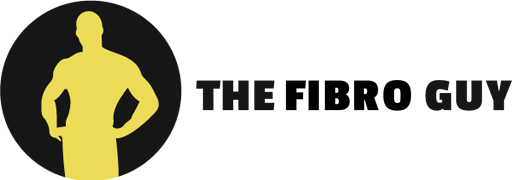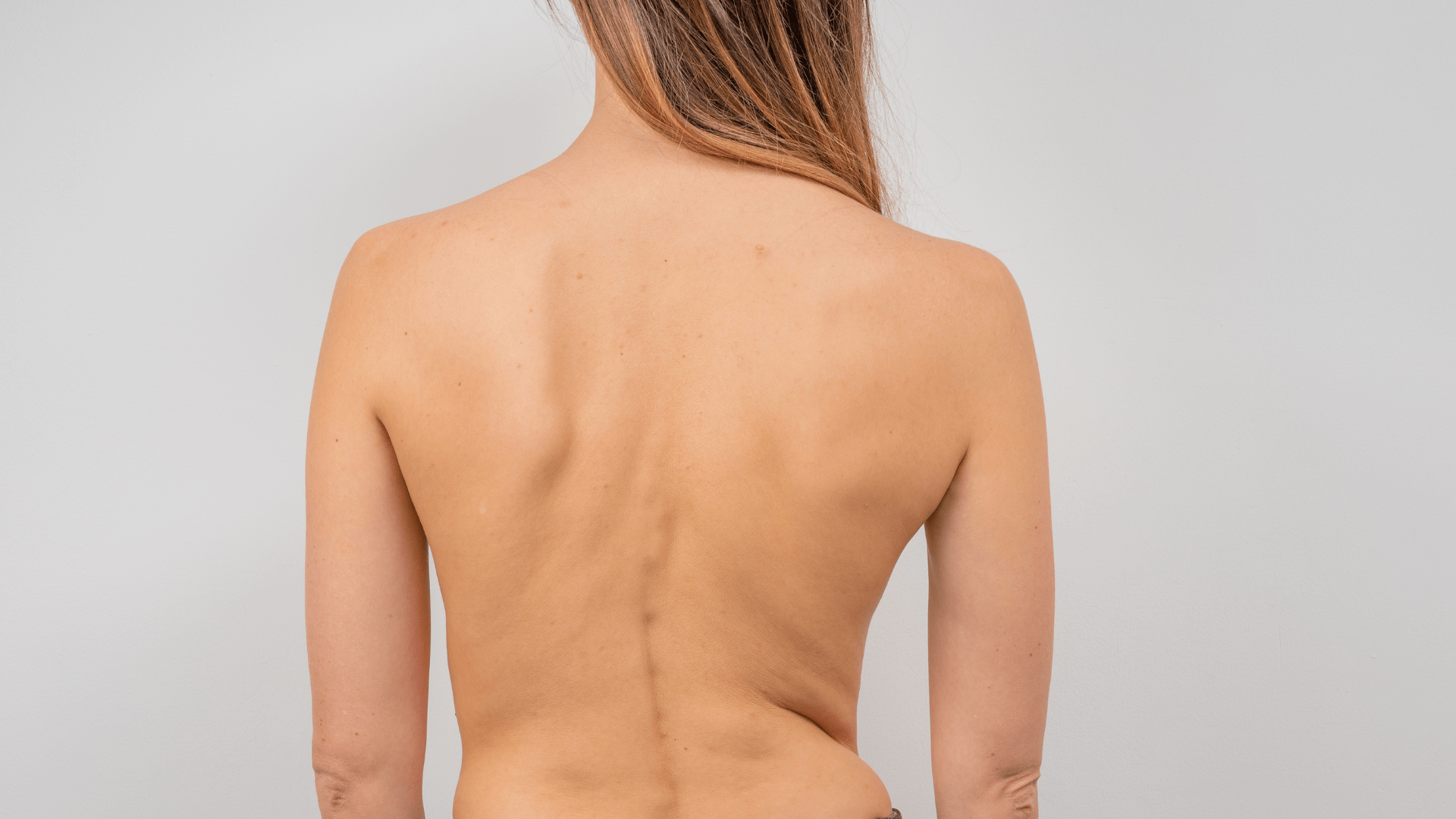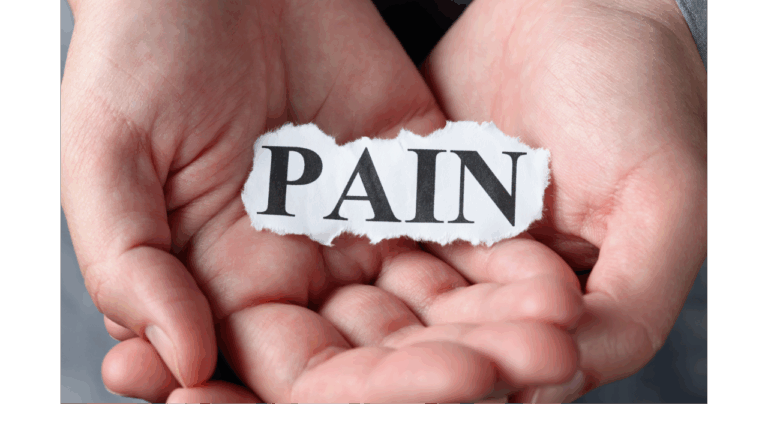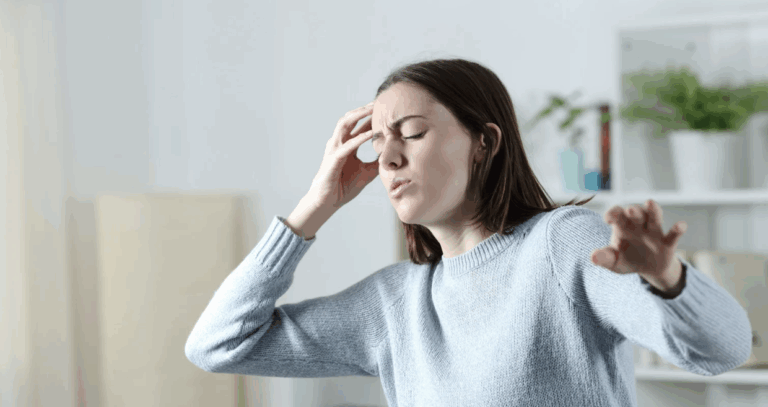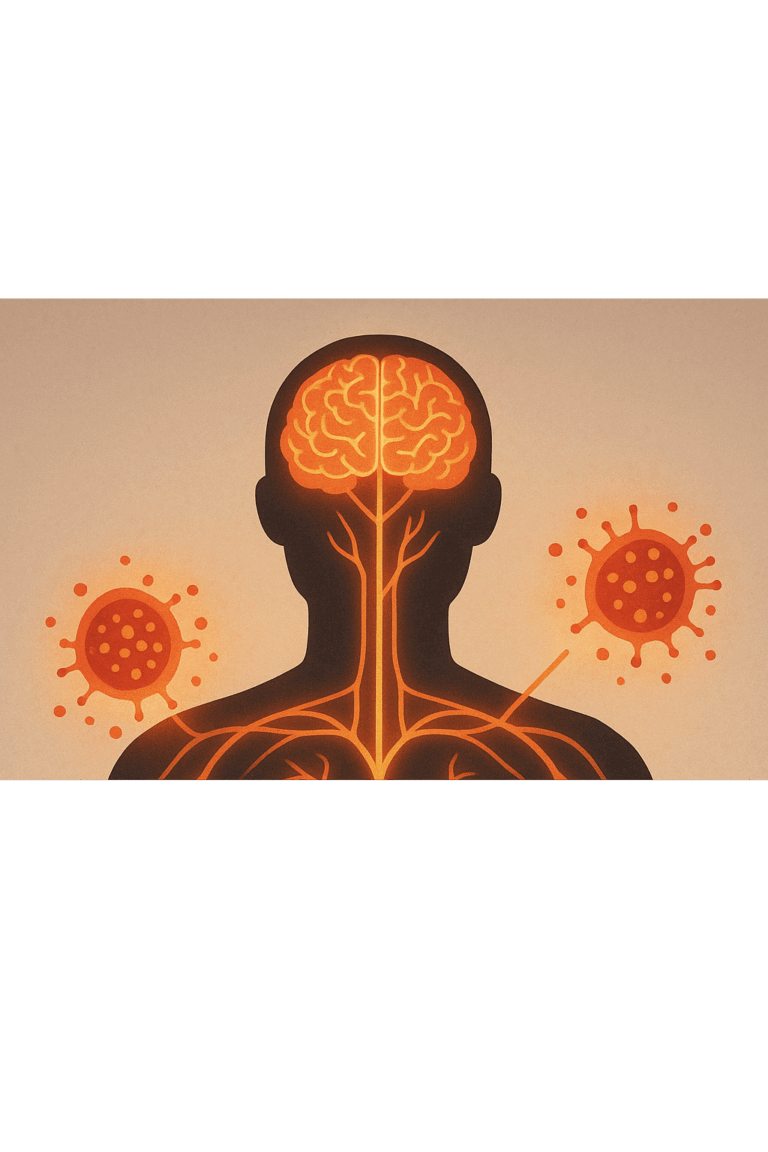- POTS and Exercise: The First Step Everyone Misses - 27 June 2025
- The Missing Link Between Breathlessness, Fatigue, and Chronic Pain: Understanding CO₂ Tolerance - 19 June 2025
- What is Mast Cell Activation Syndrome? - 12 May 2025
People who experience both scoliosis and hypermobility often find themselves faced with a unique combination of symptoms and difficulties. Instability, chronic pain, exhaustion, and the constant struggle to maintain an upright posture when it feels like your body is fighting you. Finding a solution that works for both of your conditions can be a real challenge, especially when the advice you’ve been reading doesn’t seem to apply.
The reality, though, is that you can take concrete measures to increase your stability, decrease your discomfort. No matter how long you’ve been dealing with scoliosis and hypermobility, this guide will equip you with the knowledge you need.
We will discuss the link between hypermobility and scoliosis, the significance of muscular imbalances and habits affecting the nervous system, and the everyday routines that can help the condition. In addition, there is a video that will walk you through the process of beginning some basic yet effective exercises.
Fast solutions or miraculous extensions are not the point here. It’s about being in tune with your body and developing routines that bring you daily strength and stability.
You’re not alone in this, and you’ve got everything you need to get started right here.
This article covers:
ToggleWhat is Scoliosis and How Does it Relate to Hypermobility?
Although they are separate disorders, scoliosis and hypermobility frequently coexist (1). The initial stage in efficiently managing them is to comprehend their interconnections.
Scoliosis is characterised by a curvature of the spine that occurs on the side, usually in the shape of a “S” or “C.” Scoliosis, however, is rarely characterised by a straight line; rather, it is associated with a rotational twist of the vertebrae, which can lead to muscular, joint, and neurological imbalances. Curvature can range from almost imperceptible to highly apparent, and it frequently causes difficulties such as pain, stiffness, and exhaustion.
However, excessive joint movement due to lax connective tissue is known as hypermobility. The structurally stabilising ligaments and tendons are more pliable and less supportive in hypermobile people. The body will have to work harder to compensate for the instability it causes in the joints and spine, even though this may sound harmless or even beneficial in some cases (2). There is also a very common issues that those with scoliosis with find, and thats rib subluxations, die to the constant pressure acting on the ribs.
So, what’s the connection between these two ailments?
The spine is more susceptible to asymmetrical forces and muscular imbalances when the connective tissue is unable to adequately support the joints. These factors can gradually cause the spine to develop a scoliotic curve. Because their connective tissue is weaker, hypermobile people’s normal muscular support system has a harder time keeping their spines in proper alignment. As a result, their nervous system begins to compensate by causing them to guard their muscles and change their movement patterns.
The neurological and muscular systems are intricately involved, making this a structural problem as well. When one set of muscles in the back gets overly tight, it can cause the muscles on the other side to weaken and stop supporting the spine properly. In an effort to safeguard the spine, the nervous system may further amplify these inequalities by maintaining a contracted state in particular muscles.
Muscle Imbalances
Muscle imbalance is a major contributor to the onset and progression of spinal curvatures in hypermobility and scoliosis. The way the muscles surrounding the spine respond, adjust, and occasionally overadjust is just as important as the shape of the spine itself (3).
Convex vs. Concave Sides
In most cases of scoliosis, the spine creates two distinct sides: a concave side (the inner curve) and a convex side (the outer curve). These sides behave very differently:
- On the concave side, the muscles are tight, overactive, and often in a state of constant contraction. This tightness pulls the spine further into the curve and creates tension that can become incredibly uncomfortable over time.
- On the convex side, the muscles are often underactive, weak, and less engaged. They lack the strength to pull the spine back into a more balanced position.
This imbalance is not random. It’s a response from the body to try and stabilize the spine—unfortunately, it often makes things worse.
The Multifidus
This is a tiny, but powerful muscle, that is essential for spinal stability. The multifidus, which runs perpendicular to the spine, serves an essential function in stabilising the spine and maintaining proper alignment of its individual vertebrae.
When a person has scoliosis, the multifidus muscles on the back are either too tight and active or underdeveloped, making it difficult for them to provide the necessary support for their spine. The back curve reinforces itself as a result of this imbalance, which causes the tight side to remain tight and the weak side to remain weak.
Effects of Imbalanced Muscles
Ignoring these inequalities leads to a domino effect of issues (4):
– The spinal curve can deepen as muscles pull in different directions.
– Constant strain on one side and no support on the other can lead to chronic pain. As a result, the body may start to compensate with rigid, protective movement patterns, which can reduce mobility.
It’s not merely about pain; it’s about your body’s mobility, stability, and support as you go about your day.
Why the Nervous System Plays a Key Role
The neurological system is frequently disregarded when hypermobility and scoliosis are being managed. In reality, though, it is a key factor in your body’s reaction to both diseases. Although muscle strengthening and stretching get a lot of attention, the nervous system actually controls muscle behaviour.
Stretching Won’t Make You Longer; It Will However Relieve Stress!
There’s a widespread misunderstanding that stretching actually lengthens muscles. When you stretch, the length of your muscle fibres doesn’t change much. A calming effect on the nervous system is its actual effect.
Muscle tightness is usually not due to a lack of length but rather to the nervous system maintaining an overactive state in the muscle. This may occur as a safeguard against instability, such as that which is caused by scoliosis and hypermobility.
A simple way to reassure your brain and nerves that everything is okay, is to stretch. Now you can unwind. The end effect is a relaxed muscle that is easier to move around in and has more range of motion. The problem is that the tightness will return immediately if the neurological system continues to perceive instability. This is why retraining the nervous system and strengthening muscles are necessary complements to stretching.
Protecting Muscles
Extreme safeguarding is the brain’s nature. In cases of potential instability, such as the spinal misalignments seen in scoliosis, it intervenes to protect the affected area (5). It accomplishes this by tensing up specific muscles and then locking them into place.
Although this protective reaction may appear useful at first, it will eventually backfire. On one side, the muscles tend to be chronically tight, while on the other side, the muscles tend to be weak and underused. Since the brain doesn’t automatically “let go” of guarding, this cycle becomes even more complex. To begin unravelling these patterns, it requires constant signals of stability, balance, and safety.
Regular Routines
Maintaining a regular schedule is great for your neurological system. Everything about your body language: from how you sit, stand, walk, and hold yourself, benefits from repetition. Regrettably, repetitive motions tend to amplify the muscular imbalances observed in hypermobility and scoliosis.
As an illustration:
Leaning to one side while sitting becomes “normal” after a while if you do it often enough.
If you tend to be unstable and constantly hold tension in one side of your back, your nervous system will learn to do it automatically. Because these routines harden with time, even little adjustments to one’s posture or movement become more noticeable and difficult to implement. This highlights the significance of being mindful and consistent when attempting to retrain these patterns.
Scoliosis and hypermobility are two conditions that make daily life difficult. The physical features of a curved spine or flexible joints are important, but the daily challenges of a body that is constantly adjusting and stabilising itself are just as important. These problems are more complex than those that can be solved by standard workout programs or pieces of advice.
Unfortunately, people living with scoliosis and hypermobility often experience chronic pain. Muscles, nerves, and joints all have to work extra to make up for instability, so it’s not just the spine’s curvature that causes it.
- Overactive Muscles: Muscles on the underside of a scoliotic curve tend to be chronically tight, which can pull on the spine and cause pain.
- Unstable Joints: Because hypermobility causes joints to be lax, muscles are overworked and eventually fatigued to stabilise the joints.
- Physical discomfort is only one aspect of this vicious cycle: It’s mentally and physically taxing, and it can make the smallest of tasks seem insurmountable.
Feeling exhausted
It’s easy to forget how taxing it is to be a part of a body that’s always battling for equilibrium. When you have hypermobility, your muscles have to work harder to support your body because your ligaments and connective tissues can’t. You have to work harder at everything you do. You have to be aware of and correct your posture every time. You feel like you’ve been planking nonstop for hours on end every day.
Even with little exertion, your energy reserves are depleted and you experience mental and physical fatigue due to this continuous muscular compensation.
Exercise Program Frustration
Everyone has felt the frustration of trying a generic “scoliosis workout” or a standard hypermobility exercise plan at some point. When you’re juggling two conditions at once, it’s even more difficult to find a solution that works for everyone.
Some exercises might leave you feeling worse, while others seem to make no difference at all. This often happens because many plans fail to consider the complex relationship between your nervous system, muscle imbalances, and connective tissue laxity. The frustration you feel isn’t due to a lack of effort: it’s usually because the advice you’ve been following wasn’t designed with your unique body in mind.
Consistency is key when dealing with hypermobility and scoliosis. While specialised treatments and workouts are important, it’s usually the little things you do every day that add up to a big difference. The point isn’t to cram more into an already full schedule, but rather to find ways to incorporate brief, purposeful periods of reflection and action into your daily routine.
Being Aware of Your Posture
Posture isn’t about maintaining an erect posture all day; rather, it’s about overcoming patterns of movement that contribute to an imbalanced body.
When sitting, standing, or even walking, many people with scoliosis or hypermobility unconsciously lean or collapse into their curve. To avoid this, it’s important to avoid slumping into your habitual curve. You can prevent those patterns from getting more entrenched if you notice them and make small adjustments.
Use chairs and supports designed for ergonomics: A chair’s ability to alleviate back pain, provide armrests, and be height-adjustable is crucial. You can avoid straining your back by using small supports, such as cushions or lumbar rolls, to keep your posture correct.
Important Tip: Instead of striving for perfection, try to make small, consistent corrections all day long.
Stretching the Concave Side, or Tight Side
Instead of attempting to “fix” the curve, stretch to relax overactive muscles and signal your nervous system that it is safe to do so.
To loosen up the concave side of your body, try some light, focused stretches.
- To help your nervous system relax, hold each stretch for one to two minutes.
- Strench multiple times a day rather than in a single lengthy session.
Important Hint: Stretching shouldn’t ever hurt. All you’re trying to do is gently tug.
Convex Side Strengthening: Improving the Weak Side
It takes more than strength to activate and bring attention to the convex side muscles that are weak and underused.
For example, if your abs are on the weaker side of your curve, you can activate and strengthen those muscles by doing exercises like lateral flexion movements with resistance. Be gentle and concentrate on accuracy rather than force. Improving one’s form is preferable to forcing oneself to perform a movement poorly.
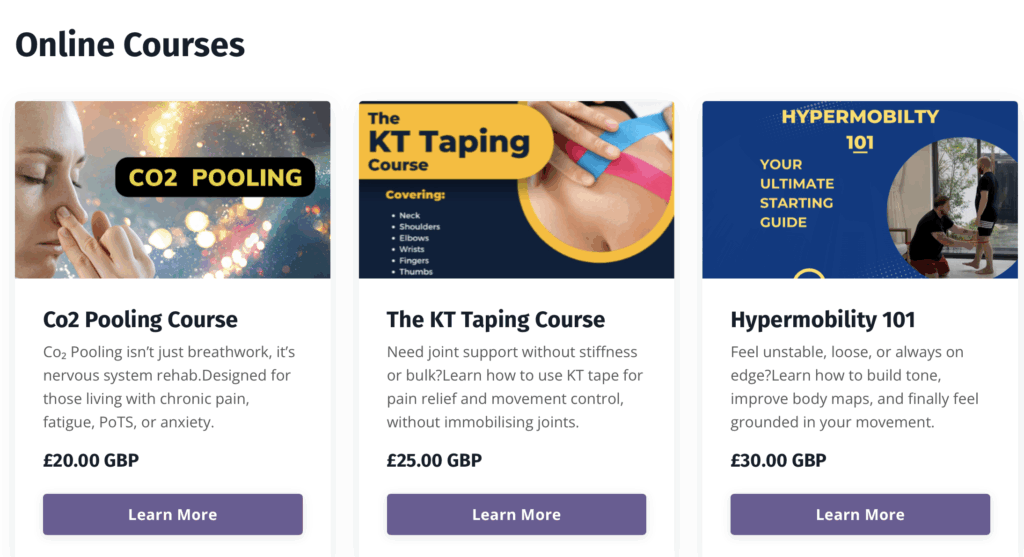
Tip: Strength training isn’t something you do once and then forget about. It only takes a few minutes a day to make a difference.
Regular Practice
Consistency is always more important than intensity when managing scoliosis and hypermobility.
- A single intense workout is not nearly as effective as multiple smaller interventions spaced out throughout the day, such as a stretch here and a posture correction there.
- Incorporate practises into your daily life: stretch while you wait for the kettle to boil, readjust your posture as you type, or take a short break to engage your weaker side.
Keep calm. - Rewiring the nervous system takes time, but with consistent little steps, you’ll see big improvements in no time.
Video Guide: Step-by-Step Exercises to Help Yourself
When it comes to managing scoliosis and hypermobility, understanding what to do is only half the battle. The real progress happens when you can take those insights and turn them into consistent action. That’s where this step-by-step video guide comes in.
This isn’t just a list of random exercises: it’s a practical roadmap designed specifically for bodies dealing with the combined challenges of hypermobility and scoliosis.
In This Video, You’ll Learn:
- How to Identify Your Tight and Weak Sides:
- Learn a simple self-assessment technique to understand which side of your spine is overactive and tight (concave) and which side is underactive and weak (convex).
- Learn a simple self-assessment technique to understand which side of your spine is overactive and tight (concave) and which side is underactive and weak (convex).
- Stretching Exercises for the Concave (Tight) Side:
- Gentle, effective stretches aimed at calming down overactive muscles and reducing nervous system tension on the concave side.
- Gentle, effective stretches aimed at calming down overactive muscles and reducing nervous system tension on the concave side.
- Strengthening Exercises for the Convex (Weak) Side:
- Targeted exercises designed to wake up and activate weak muscles on the convex side, building support and improving alignment.
- Targeted exercises designed to wake up and activate weak muscles on the convex side, building support and improving alignment.
- How to Address Pelvic Rotation Using the “Book Trick”:
- A simple technique using a book to realign your pelvis and ensure that stretches and strengthening exercises are as effective as possible.
- A simple technique using a book to realign your pelvis and ensure that stretches and strengthening exercises are as effective as possible.
- Why Repetition Throughout the Day is More Effective Than Sets and Reps:
- Understand why frequent, low-intensity movements have a bigger impact than occasional, intense exercise sessions.
If you have scoliosis and hypermobility, managing the condition won’t be a race against the clock. Consistency on a daily basis and joy in incremental progress are key. Improving your balance, decreasing pain, and creating a sense of stability in your body can be achieved with even the smallest of adjustments, like adjusting your posture, stretching out the tight side, or strengthening the weak side.
While the methods and exercises presented here won’t magically transform your life, they will be invaluable resources. They have the potential to significantly improve your day-to-day mobility and well-being when practiced consistently.
Facing the complexity of these conditions can be overwhelming, but remember that progress is not made in leaps but in tiny, repeatable steps. Every little bit helps, whether it’s a two-minute stretch, a thirty-second stand-up straighter, or a brief strengthening exercise.
Just keep in mind that with each repetition, stretch, and conscious shift in your posture, you’re getting closer and closer to achieving stability and comfort.
On this path, you will not walk alone. Never be afraid to ask for help if you’re confused, stuck, or just need someone to talk to. At all times, you can find answers, encouragement, and support.

FAQ: On Hypermobility and Scoliosis
Yes, although Ehlers-Danlos syndrome symptoms are from a genetic condition present from birth, its symptoms may not become apparent until later. Many individuals only receive a diagnosis in adulthood because the disorder’s manifestations can be subtle or overlooked in earlier years, something which is very common when it comes to EDS and aging.
Surgery is generally reserved for severe or progressive cases of scoliosis, particularly when curves exceed 45-50 degrees. However, many individuals with severe scoliosis can experience substantial improvements through non-surgical methods such as physical therapy, bracing, and specific exercise programs. Research indicates that conservative treatment approaches can effectively manage symptoms and prevent curve progression without the need for surgical intervention. Regular monitoring and early intervention are crucial for optimizing outcomes in these cases.
Individuals may begin to notice small improvements within a few weeks of starting a consistent exercise regimen. However, significant changes in spinal curvature or overall function typically require several months of dedicated practice. A systematic review highlighted that patients who adhered to scoliosis-specific exercise programs experienced notable improvements in their Cobb angles (a measure of spinal curvature) over extended periods. Consistency in these practices is key to achieving lasting benefits.
While structural curves associated with hypermobility syndromes may not fully reverse, significant improvements in function, pain reduction, and spinal stabilization are achievable through targeted interventions. Evidence suggests that scoliosis-specific exercises can help manage symptoms effectively and may even lead to measurable improvements in spinal alignment over time. For instance, studies have shown that consistent engagement in physical therapy and specific exercises can lead to stabilization of the curve and improved quality of life for individuals with scoliosis related to hypermobility.
Scoliosis frequently exhibits a lateral curvature that pulls to one side due to several factors, including muscle and nerve imbalances, habitual postures, and asymmetrical movement patterns. Research indicates that individuals with scoliosis often develop muscle imbalances where certain muscles become tight while others weaken, leading to an exacerbation of the spinal curvature. Additionally, habitual postures, such as slouching or favouring one side during activities, can further contribute to this asymmetry by creating uneven stress on the spine and surrounding muscles.
Enjoyed Our Blog? Why Stop Here?
If you’ve found value in our posts, imagine what you’ll gain from a structured, science-backed course designed just for you. Hypermobility 101 is your ultimate starting point for building strength, stability, and confidence in your body.
References:
- European Medical Journal. (2021). Prevalence of Scoliosis in Hypermobile Ehlers-Danlos Syndrome. [online] Available at: https://www.emjreviews.com/rheumatology/article/prevalence-of-scoliosis-in-hypermobile-ehlers-danlos-syndrome-j190221/.
- Shere, C. and Clark, E.M. (2022). Systematic review of the association between isolated musculoskeletal hypermobility and adolescent idiopathic scoliosis. Archives of Orthopaedic and Trauma Surgery. doi:https://doi.org/10.1007/s00402-022-04508-z.
- Chan, Y.-L., Cheng, J.C.Y., Guo, X., King, A.D., Griffith, J.F. and Metreweli, C. (1999). MRI evaluation of multifidus muscles in adolescent idiopathic scoliosis. Pediatric Radiology, 29(5), pp.360–363. doi:https://doi.org/10.1007/s002470050607.
- Anon, (2023). Scoliosis Muscular Imbalance: A Symptom or Bigger Concern? [online] Available at: https://www.scoliosisreductioncenter.com/blog/scoliosis-muscle-imbalance.
- Formaggio, E., Bertuccelli, M., Rubega, M., Di Marco, R., Cantele, F., Gottardello, F., De Giuseppe, M. and Masiero, S. (2022). Brain oscillatory activity in adolescent idiopathic scoliosis. Scientific Reports, 12(1). doi:https://doi.org/10.1038/s41598-022-19449-1.
